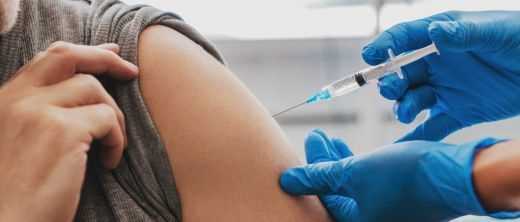Last updated: May 20, 2021
By vaccinating against the SARS-CoV-2 virus, it is possible to get the corona pandemic under control. If enough people in the population are vaccinated, the infection rate falls and, as a result, the number of deaths. Since people often cannot be vaccinated for health reasons, they are dependent on what is known as herd immunity. When is it achieved in Germany? The vaccination progress calculator keeps you up to date on a daily basis.
Overview:
Vaccination progress: forecast of the end of the pandemic
The numbers refer to the vaccination rate of the previous week. They only provide a forecast of when herd immunity against Corona will be achieved. According to the Federal Ministry of Health, it is currently expected that the pandemic will end as soon as 80 percent of the population are immune to the coronavirus. However, the number can change due to mutations that occur.
Protecting yourself and others: why some people are not vaccinated
The coronavirus has a grip on the world and people will have to learn to live with it. However, with the vaccination, which has been around since December 2020, infections can be reduced and severe courses and deaths can be reduced. It is not only self-protection that is important. If a certain proportion of a population is vaccinated, the spread in the country as a whole is reduced. According to current calculations, this is the case in Germany as soon as 80 percent of the total population have received a corona vaccination or are immune to SARS-CoV-2 through surviving infection and vaccination. But what about the rest of the people?
People who have a weak immune system due to chemotherapy currently being carried out, for example, as well as most pregnant women, breastfeeding women and children do not yet receive a corona vaccination. In order to protect these groups as well, it is important that as many people as possible are immune. This can contain the spread and reduce the likelihood that people who have not been vaccinated will get Corona.
How is herd immunity calculated?
Epidemiological models and calculations give the value that must be achieved for adequate immunity. The basic reproduction number R0 is important for this. It indicates how many people an infected person would infect if no one in the population were immune. SARS-CoV-2 then only spreads until the value is below 1, for example. Components such as people’s contact behavior and population density also play an important role.
For measles, the required immunity in the country is 95 percent. This number is calculated from the R0 value, which is 12 to 18 for measles. The base reproduction number for SARS-CoV-2 is on average 3.3 to 3.8. This results in a necessary herd immunity of 80 percent. However, this number can change, for example if a virus variant is more infectious than the previously known.
Last updated: May 20, 2021
Order the newsletter
Do you have a question?
Would you like information on specific symptoms or medical advice? Here you can put your questions to our experts or other Lifeline users!
.

